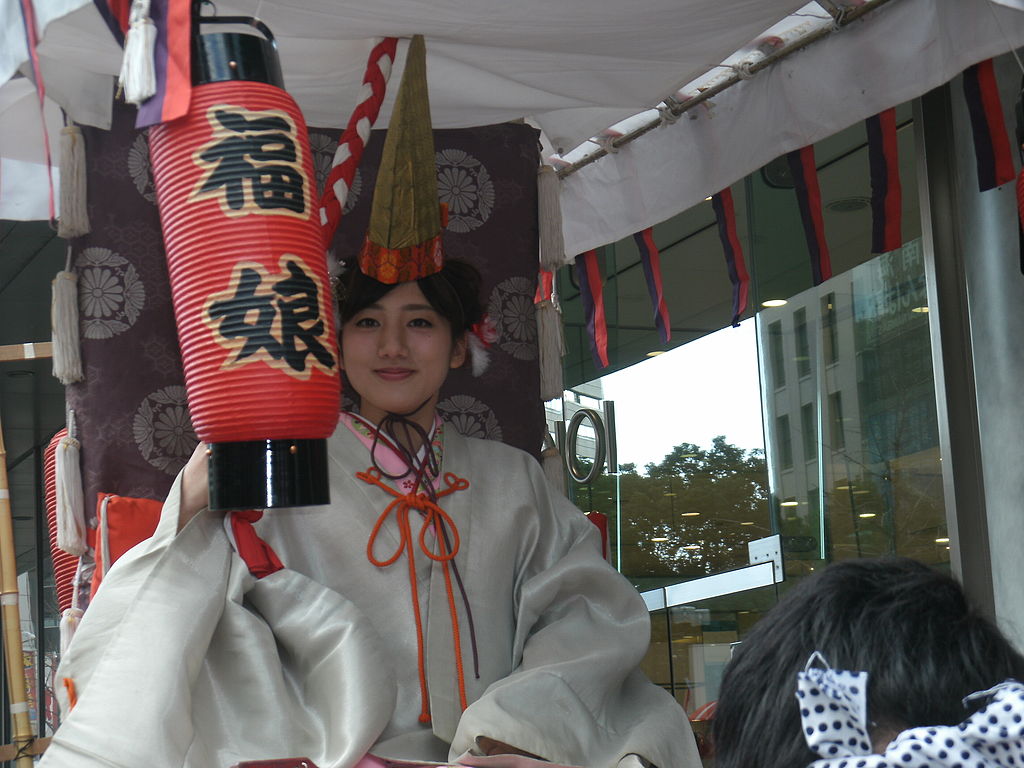Dec 24, 2015
The First Month of the Year, Kansai Style!

With the holidays over and the winter cold setting in, it can be difficult to find reasons to leave your house in the first month of the new year. Fortunately for people living in the Kansai region, there are too many exciting traditional events and festivals in January to risk missing by staying home. Whether they’re a day-trip distance away or in your neighborhood, there’s sure to be enough activities to keep your calendar full and your post-holiday blues subdued.
Toka Ebisu Festival
Ebisu is the patron deity of commerce and fisheries, and for three days in January, a lively festival is held for people to come to Ebisu shrines all over Japan and pray for success in business. Kansai is the most popular region for the Ebisu Festival because for many years the area was the commercial and trading hub for the country. The largest and most prominent festival occurs at the Imamiya Ebisu Shrine in Osaka from January 9-11. The main festival day is January 10, where visitors can enjoy sea bream from the morning market before watching the Good Luck Palanquin parade. Be sure to purchase a good luck bamboo branch or other lucky souvenirs!
Osaka
Where: Imamiya Ebisu Shrine, 1-6-10 Ebisunishi, Naniwa-ku, Osaka 556-0003
When: January 9-11, 2016
Time: 7:00 a.m.
Admission: Free
Reference Website (English): http://www.osaka-info.jp/en/facilities/cat21/post_301.html
Hyogo
Where: Nishinomiya Ebisu Shrine, 1-17 Shake-cho, Nishinomiya
When: January 9-11, 2016
Admission: Free
Website (Japanese): http://nishinomiya-ebisu.com/
Kyoto
Where: Ebisu Shrine, 125 Komatsu-cho, Yamatooji Shijo-sagaru, Higashiyama-ku, Kyoto
When: January 8-12, 2016
Time: 3:00 p.m.
Admission: Free
Reference Website (English): http://www.insidekyoto.com/toka-ebisu
Arima Onsen Irizomi Shiki (Kobe)
Being the oldest hot spring in Japan is a title that comes with many customs and traditions to be upheld. One such tradition occurs every year in January at the famous onsen in Kobe. On January 2, various ryokan owners travel from Arima onsen to the cultural auditorium dressed as traditional bathers, Buddhist monks, and Shinto priests. In the ceremony they churn the waters of the onsen until they are the correct temperature to start out the new year. Enjoy this cultural ceremony while relaxing in the beautiful nature of Arima!
Where: Arima Elementary School’s Cultural Auditorium: 790-3 Arima-cho, Kita-ku, Kobe, Hyogo Prefecture 651-1401
When: January 2, 2016
Admission: Free
Reference Website (English): http://visit.arima-onsen.com
Coming of Age Day (Seijin no Hi)
Regardless of where you are in Japan, exploring your city center during the coming of age day festivities is a must. Travel to the city hall building starting at noon to hear some well-wishes spoken by city officials to the new adults of the community. Following the initial ceremony and speeches, many photographers and families walk around downtown interviewing the new adults and taking pictures of them in their fancy ensembles. It is a lively and festive day that shouldn’t be missed! This year’s festivities will be held on Monday, January 11.
In addition to the standard coming of age day celebrations, there are also a few traditions that occur around the holiday in the spirit of entering adulthood. Most involve adolescent boys partaking in some display of power or competition, and there are a few entertaining examples occurring around Kansai in January.
Hadaka Odori (Kyoto)
In a prayer for the year’s good harvest and prosperity, young local men wearing little clothing push against each other yelling “Chorai, Chorai” which means “mercy on me, Buddha.”
Where: Hokaiji Temple, 19 Hino Nishidaidocho, Fushimi-ku, Kyoto
When: January 14, 2016
Admission: Free
Doya Doya (Osaka)
In Osaka, young men dressed only in loin cloths engage in an exciting and energetic fight to maintain possession of a sacred amulet.
Where: Shitenno-ji Temple, 1-11-18 Shitennoji, Tennoji Ward, Osaka 543-0051
When: January 14, 2016
Admission: Free
Toshi-ya (Kyoto)
1,000 archers line up at the Sanjusangen-do Temple in Kyoto to shoot their arrows at a target 150 meters away.
Where: Sanjusangen-do Temple, 657 Sanjusangendomawari, Higashiyama Ward, Kyoto 605-0941
When: January 11, 2016
Admission: Free
Azuki-gayu Festival (Kyoto)
It is popular belief throughout Kyoto that eating red bean rice porridge (azuki-gayu) when the new year begins will ward off illness and help you maintain health for the year to come. The dish is commonly eaten at Zen Buddhist temples, and if you partake in the festivities you can try some for yourself!
Where: Torin-in Temple, Myoshinji-cho Hanazono, Ukyo-ku Kyoto 616-8035
When: January 15-31, 2016
Time: 11:00 a.m. – 3:00 p.m.
Price: 3,800 JPY (Includes plum tea, azuki-gayu, shojin vegetarian cuisine; reservations not required)
Reference Website (English): http://www.kyoto-kankou.or.jp/english/info_search/?id=3389&r=1333184819.757
Wakakusa Yamayaki (Nara)
Though the exact origins are unclear, this festival, which has been taking place in Nara for hundreds of years, is an incredible sight to see. The day starts around noon at a few temples surrounding Nara park, but things really heat up in the evening with fireworks and a huge mountainside bonfire. Just before sunset, a group of locals start a procession that ends at the base of Mt. Wakakusayama where viewers can gather to watch them light the mountain on fire. The firey view can be seen from many places in the city, but the most action occurs at the mountain’s base. Make sure to be alert during the ceremony; though the flames are massive, they usually do not last long!
Where: Mt. Wakakusa, Zoshicho, Nara, Nara Prefecture 630-8211
When: January 23, 2016 (In case of bad weather, date will change to the following week, January 30)
Time: 12:00 p.m. – 6:00 p.m.
Admission: 150 JPY (to enter Mt. Wakakusa Park)
Reference Website (English): http://www.japan-guide.com/e/e4118.html
By MASA (Own work) [CC BY-SA 4.0], via Wikimedia Commons


About the author